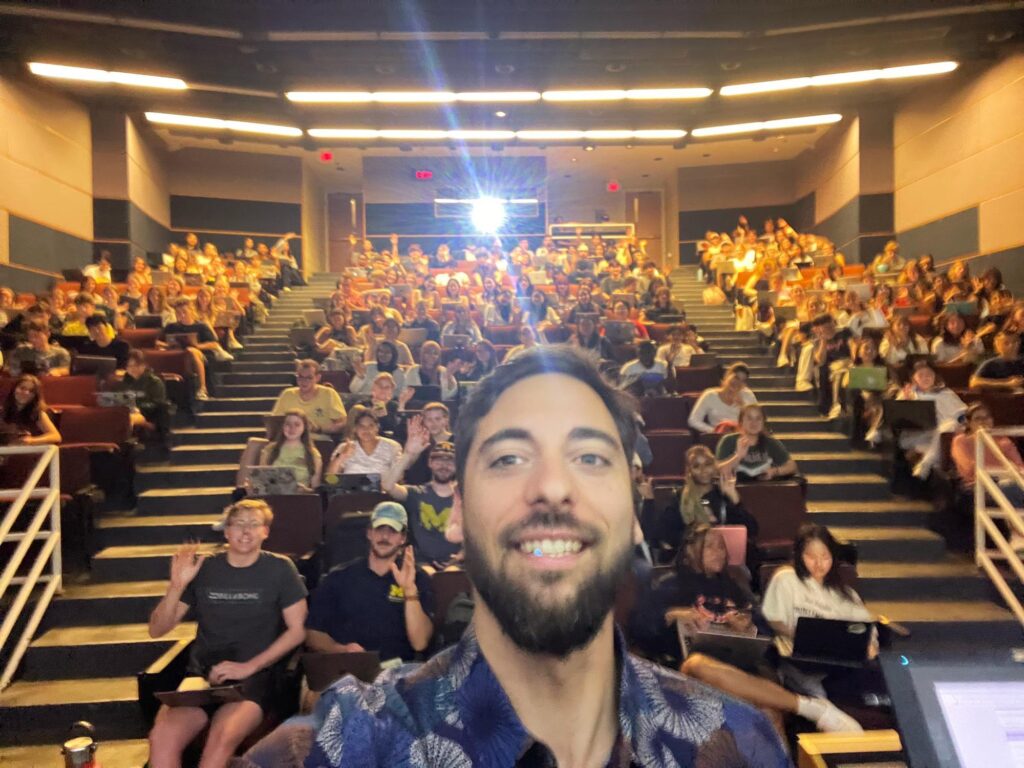Lessons from a Knight-Wallace Fellow
Over time, I’ve become increasingly enthralled by how news reaches people. As the media landscape has changed, so have the ways people engage with news. Rather than fight a losing battle to keep news consumers where they were, I’ve followed their transition from print to digital, from static images to short-form videos. These shifts dictated my path from photographer to photo editor, to social media director at National Geographic, and, recently, to Knight-Wallace Fellow.
While working at TIME and National Geographic, I noticed a problem. We knew which content performed well on social media but didn’t fully understand what brought the content through the platforms’ algorithms and into users’ feeds. The issue wasn’t just who liked our content but who never got to see it. This disproportionately affected younger generations, who are the future of social media and the future of journalism.
They receive most of their news from social media platforms, which are served to them algorithmically by individual creators — not traditional news sources. Younger audiences no longer actively choose their news; instead, algorithms largely choose it for them.
What better place to try to tackle this issue than a campus full of Gen Z students? Early on, the Wallace House staff connected me with professors at the University of Michigan School of Information: Sarita Schoenebeck, Cliff Lampe and Paul Resnick. I started with general coursework but soon focused on marketing and leadership at the Ross School of Business. This helped me better understand the intersection between business and tech within the media landscape.
When I wasn’t taking business classes or attending Wallace House seminars, I collaborated with Professor Resnick to study students’ social media habits. Rather than asking students about their social media usage, we had them share news-related videos from their feeds. What I found surprised me — in ways both discouraging and hopeful.
Time and again, I’d been told that young people don’t care about news, that social media is rife with misinformation, and that little can be done about it. While some of that is true, here are a few of the findings that changed my thinking:
- Young people care about the news and are getting more of it than ever on social media platforms. Seventy-five percent of the news stories students saw were new to them.
- While misinformation and bias exist, Michigan students had a good barometer for bullshit. Trustworthiness scores for news videos rated by students and journalists were within 10% similarity on average.
- Individual creators have surpassed traditional media accounts. Fifty-four percent of the news videos weren’t from traditional sources — and students tended to trust creators more.
- Seventeen percent of the news-related videos covered local news — making algorithmic social media a potential resource as traditional local news outlets face sharp declines.
- The vast majority of news videos came from accounts that students did not follow. Students said they wanted more news on social media but were unsure who to follow for reliable content.
This all presents an interesting opportunity. Younger demographics are consuming more news than ever, and it’s increasingly coming from social news creators like Dylan Page, Jessica Burbank or Weather With Peyton. These creators are effective but often lack the journalistic support of traditional newsrooms.
The stimulation of my fellowship year and the quiet calm of Ann Arbor have been replaced by a new job at Google and the cacophony of New York City sirens. Still, the fellowship year and my findings continue to inform my thinking. I remain grateful for the experience — and just a little jealous of the current fellows floating around Ann Arbor, looking forward to their next seminar or planning a group outing to a football game or expedition to Detroit. In the future, I hope to launch a platform to connect news creators with journalists, provide fact-based news, combat misinformation and better reach social media consumers.
Josh Raab is a senior manager at Google, where he heads social strategy for Android, Google Chrome and Google Play.
This article appeared in the Fall 2024 issue of the Wallace House Journal.

